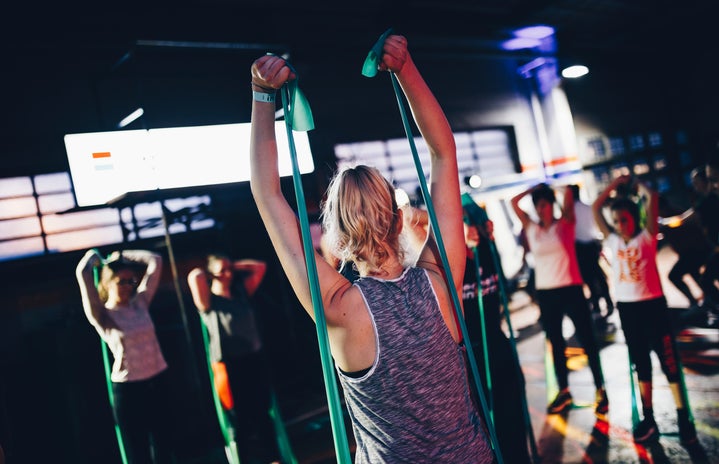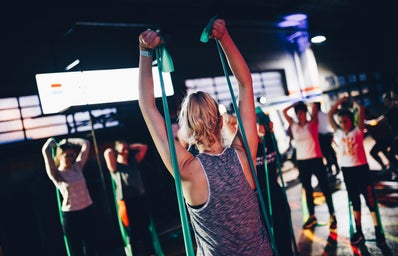Whether you’re the girl who could barely face tampons without getting queasy or someone who’s been blowing through supers since you were 12, it’s important to know all your options when it comes to managing your period. One of those options that has been getting a lot of hype recently is the menstrual cup.
Admittedly, we can all get a little set in our routine when it comes to our periods. Too many women simply tolerate the discomforts and inconveniences that come with those routines because trying anything new might prove to be a bloody disaster. But, in case you’ve been eying those strange looking cups at the back of your local drugstore, we’re here to give you the full low down on menstrual cups, how they work, and which one might be the best for you.
How does it work?
Mechanically, menstrual cups tend to work the same way. You fold the cup and insert it, similar to how you’d insert a tampon. The cup will sit lower than a tampon, but the feeling isn’t uncomfortable, and you’ll likely get used to it pretty quickly.
Once inserted, a suction is created as the cup unfolds, and that suction combined with your killer Kegel muscles keeps the cup in place. After up to 12 hours, you simply break the suction and pull the stem of the cup to remove it. Then, you can just empty, rinse, and repeat.
Pros:
- Cost Efficiency: Because most cups will last a year or even longer, you won’t need to purchase pads and tampons. This solution tends to be more cost effective for most women.
- Efficiency in General: Whether you’re a student or a working woman, chances are you’re going 100 miles a minute from the time you get out of bed until you get back in it. Cups help you keep up your pace as you only have to empty once every 12 hours, unlike pads and tampons, which must be changed every 4 to 8.
- Better Smell and Balance: Since the blood is never exposed to the air, you will experience less embarrassing period odors. Also, cups won’t dry you out like tampons, leaving your natural fluids and bacteria in place and maintaining your pH balance.
- Environmental Impact: Not only can cups be better for you, but they can also benefit the environment by cutting down on landfill waste.
- NO TSS: That’s right, cup use is not associated with toxic shock syndrome. Plus, they don’t contain any of the chemicals in pads and tampons. This also means you can use a cup overnight without any worries.
Cons:
- Ick Factor: If you’re squeamish, using a cup might be difficult, especially at first. Emptying the cup brings you face to face with your menstrual blood, and the cups often even have marked mL on the side, so you can monitor your flow. You also have to sanitize your cup after each cycle.
- Insertion and Fit: Insertion can be difficult for some, particularly if you have never used a tampon or had sex before. Also, women with fibroids or a dropped uterus may find the fit uncomfortable.
- Not Compatible with IUDs: If you use an IUD, the cup may disrupt or dislodge it. In this case, speak to your doctor before switching period management methods.
- Removal: This is the primary deterrent for most women, who are afraid the cup will get “lost” or that they won’t be able to remove it. While the cups won’t get lost, removal does present a bit of a learning curve. Pro tip- pinch the bottom of the cup, not just the stem, to break the suction and use your muscles to help you remove the cup.
Which one should you get?
DivaCup
You’ve probably seen this brand at your local pharmacy and supermarket. These silicone cups are medical grade and last 12+ months. They’re clear and slightly long, making them a good option for women with high cervixes. They come in 2 sizes one for women under 30 or have never given birth and model two for women who’ve had children or are 30+. This brand typically costs around $30.
Ruby Cup
Ruby Cups are also medical-grade silicone and the brand has a “buy one, give one” program that donates cups to women in regions such as East Africa, Nepal, and Ghana each time one is purchased. They’re also vegan. These come in an assortment of colors and are slightly wider and shorter than the DivaCup. This brand also sells the Ruby Clean, which looks like a collapsible travel cup and can be used to sanitize your cup more easily. You can get both the cup and cleaner for about $40 or just a medium or small cup for a little over $30.
Lunette
This Finland brand also produces medical-grade silicon and come in an array of colors. It’s more pliant than other brands, making it easier to insert for some. Like the Ruby Cup, Lunette cups are vegan and come in two standard sizes based off of your flow. This brand also sells more opaque cups than the previous two. The regular cups cost about $40, and if you want to participate in their “buy one, give one” program through The Cup Foundation, you can purchase a pink cup with some bonus pins for $45.
Lily Cup
Like the Diva, Lily cups are longer, making them better for high cervixes. However, Lily Cup uses an angled design aimed at better matching the unique shape of the vagina. This is also the only brand that offers a collapsible option for easier storage and travel. As usual, this cup is made of medical-grade silicone. The basic model (better for high cervixes) and the compact model (better for low cervixes) each cost about $30. Their petite Lily Cup One (best for teens and beginners) is about $25.
While menstrual cups might not be for everyone, they are a great option for many women. Of course, the only way to really find out if this is the best option for you is to try one out. Most cups pay for themselves in just a few months, so no harm no foul if it doesn’t work out.


